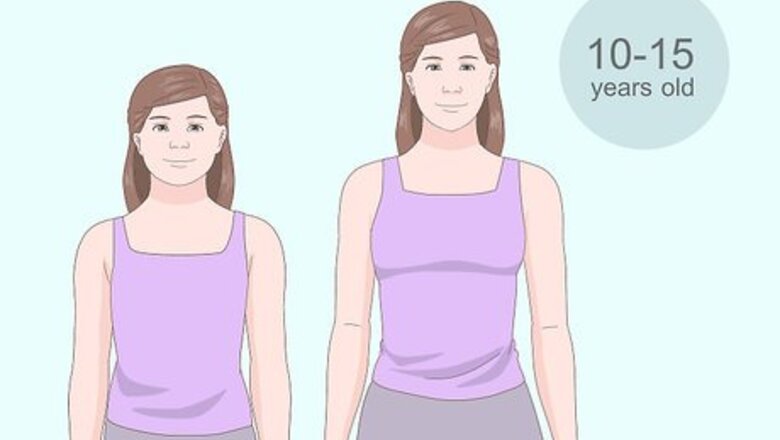
views
Watching for Signs of Your First Period
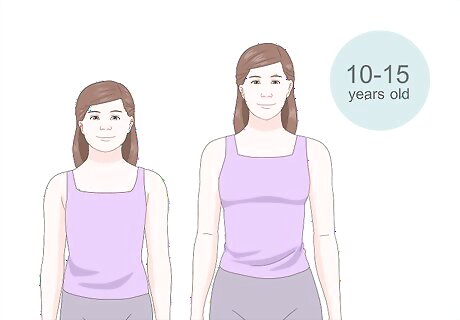
Look for your first period to arrive between the ages of 10 and 15. Everyone is different, so just because a friend, sibling, or cousin started their period already doesn’t mean there’s anything wrong. You can start your period any time between the ages of 10 and 15 and it’s perfectly normal. You might even start a little earlier or later than this and that’s fine, too. Talk to your doctor if you’re 15 and still haven’t started your period. This might be perfectly normal, but in some cases it could indicate a problem, such as malnutrition if you’re underweight. If you start your period a little later than other people, consider yourself lucky! Having your period isn’t a bad thing, but it does require some extra time and effort in terms of personal hygiene. Enjoy this time before having your first period and know that it will arrive when your body is ready for it.

Expect your period within 2 years if your breasts are growing. If you’re wearing a training bra or starting to notice that your breasts are growing, this is a sign that your period may be on its way. Most people get their periods within 2 years of their breasts developing. The size of your breasts doesn’t matter regarding when your period will start. You can have small breasts and still get your period, or large breasts and not start it for another year or 2.
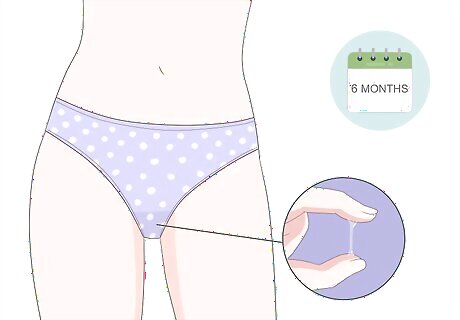
Watch for your period if you notice discharge from your vagina. If you’ve spotted discharge coming from your vagina that resembles mucus, your period might arrive within 6 months. You may notice the discharge when you wipe after going to the bathroom or see it in your underwear. If the discharge bothers you, try wearing a panty liner to absorb it. This will also provide you with some protection if you start your period unexpectedly.

Expect a period within 1 week if you have PMS symptoms. Pre-menstrual syndrome (PMS) are strong signs that your period is about to start. However, not everyone experiences PMS symptoms, so you might not notice anything right before a period starts. Some things to watch for include: Cramping in your belly or lower back Bloating in your belly Breaking out in pimples Having sore breasts Feeling tired Having mood swings, such as suddenly feeling angry, sad, or anxious
Using Panty Liners After Your Period Starts
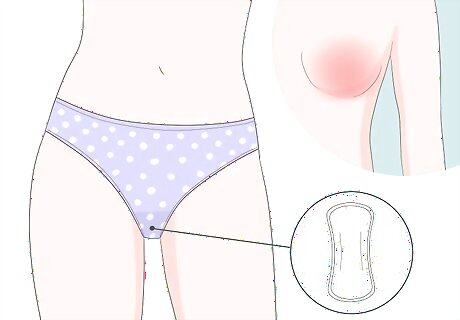
Wear a panty liner in the days leading up to your expected period. If you have noticed signs of an oncoming period or if you expect your period to start soon based on when it started the previous month, put on a panty liner. This will provide a small amount of protection if your period starts early or if you don't notice it right away. The, switch to a tampon or pad when you are able to. Try tracking your periods using a calendar or fertility app. These can help you to predict your next period, so you can start wearing a panty liner a day or 2 before.

Use a panty liner for extra protection if you use a tampon or cup. Tampons and cups go inside of your vagina and they collect menstrual blood and fluids. However, they can sometimes leak, such as if you have a heavy flow or if the tampon or cup is not inserted properly. Wearing a panty liner along with using a tampon or cup can help you to avoid leaks. Keep in mind that tampons and cups are generally effective when you use them correctly, but if you’re new to using them, a panty liner can provide you with extra security and peace of mind.
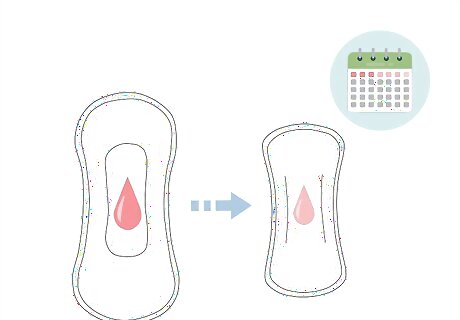
Switch from pads to panty liners on light flow days. Your period will get lighter and lighter as you approach the end of it. This is normal. Even though the flow will be light, it’s still important to wear a feminine hygiene product. A panty liner is a great choice in the last few days of your period since it’s less bulky than a pad, but will still absorb menstrual fluids. For example, if your periods generally last 5 days, try wearing a panty liner on days 4 and 5.

Change the panty liner at least once every 3 to 4 hours. This will help to prevent odors from building up and avoid leaks. Remove the old panty liner by peeling it out of your underwear. Then, roll it up with the pad side on the inside and wrap it in toilet paper. Throw the panty liner away in a garbage can. Then, unwrap a new panty liner and press the adhesive side into the inside of your panties. If your flow increases, you might need to switch to a tampon or pad. If the flow is very light or non-existent, you might be able to skip wearing a panty liner entirely. Make sure that your period is completely over before you stop wearing a panty liner. You may want to wear a panty liner for 1 to 2 days after you are sure it has stopped. For example, if your period generally lasts 6 days, wear a panty liner on days 7 and 8, too.

















Comments
0 comment